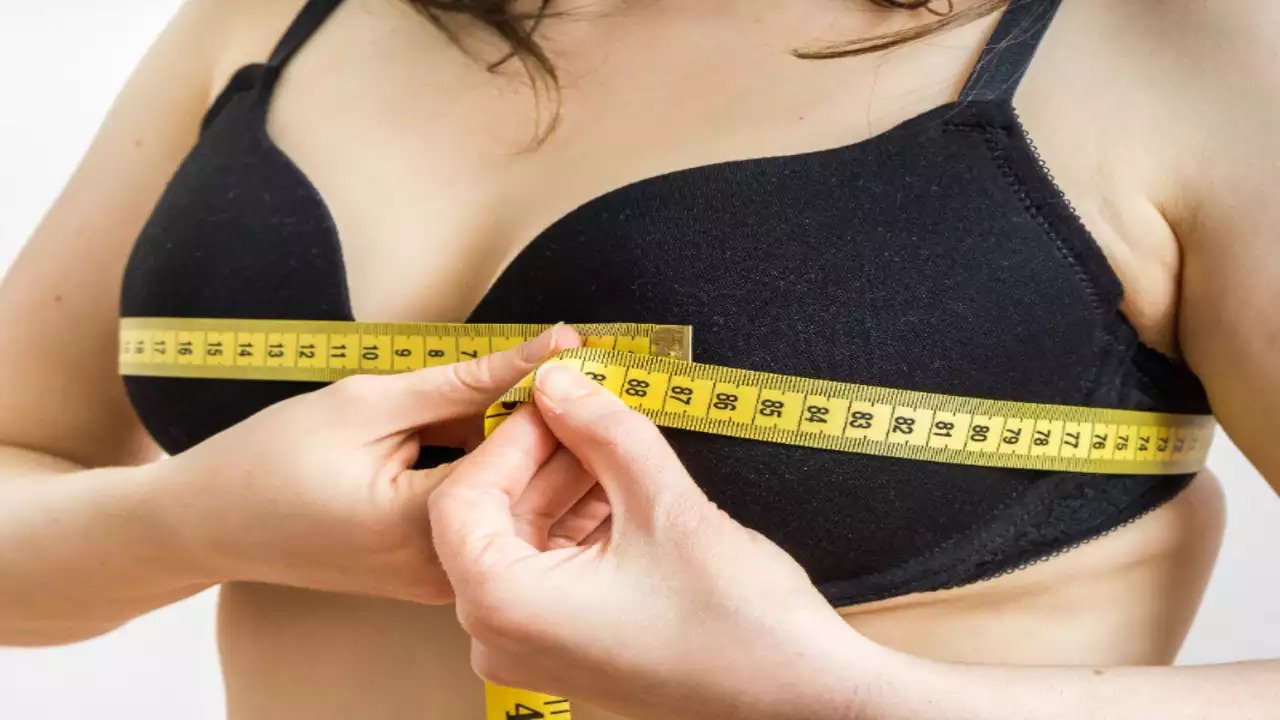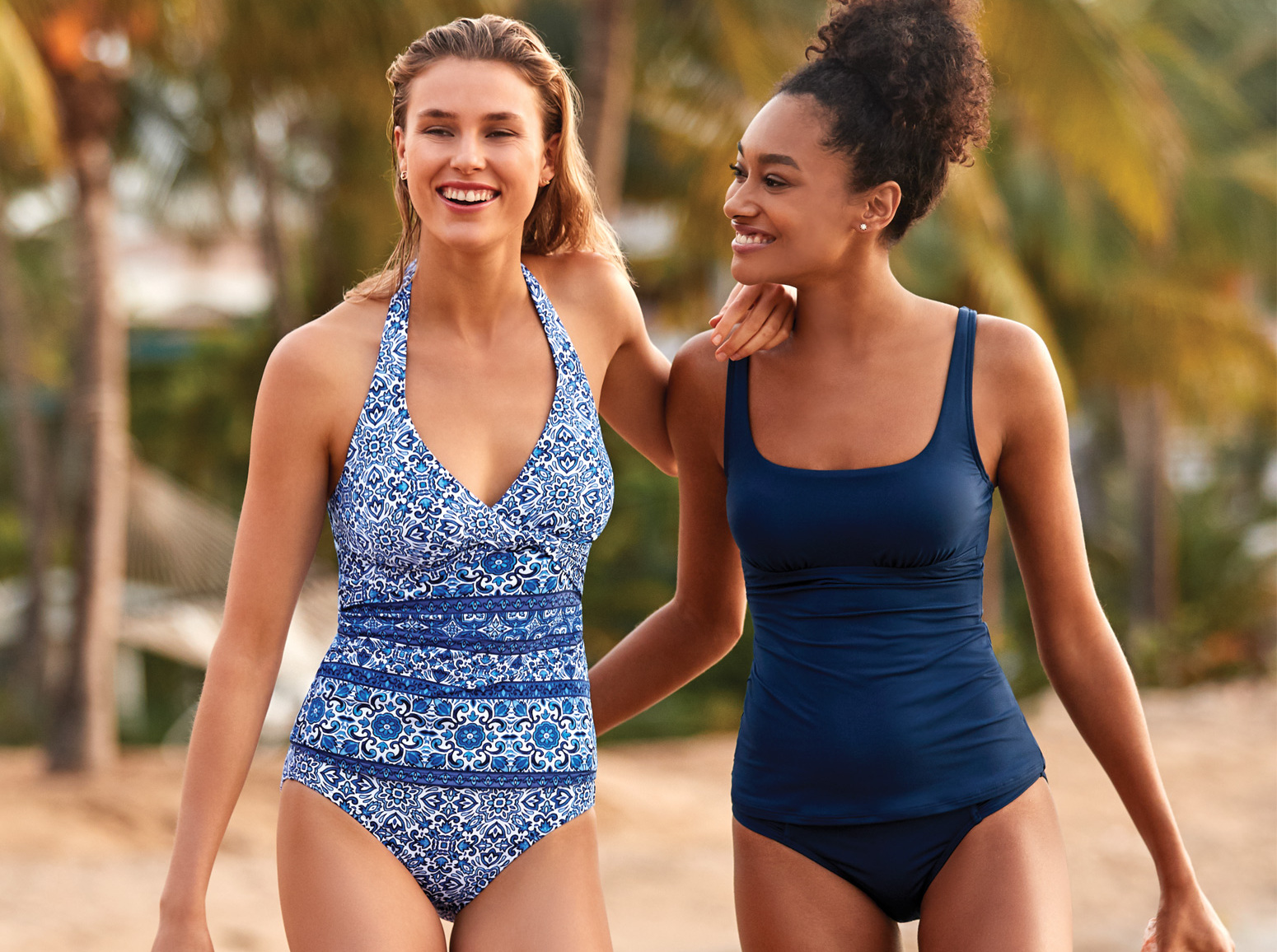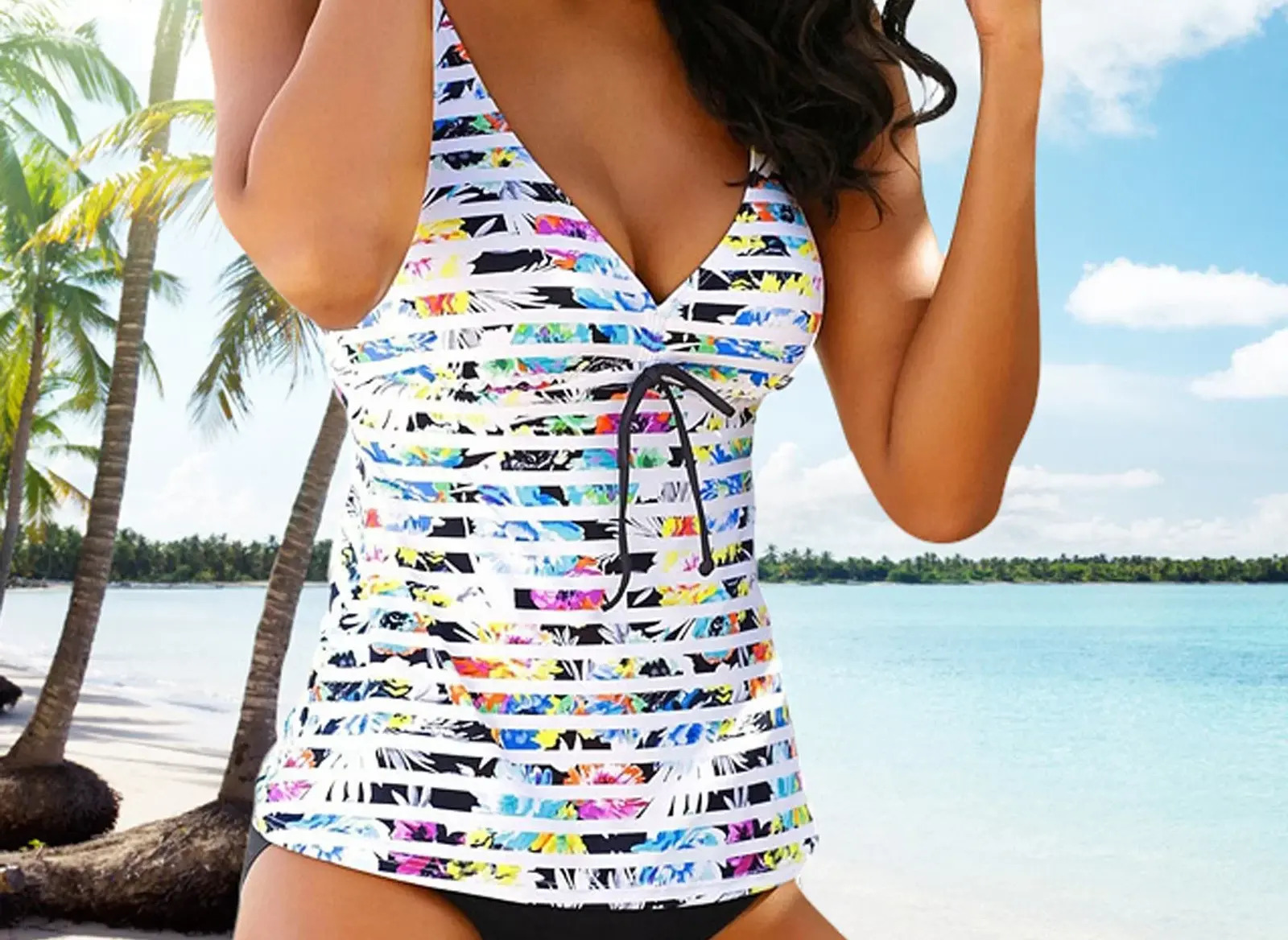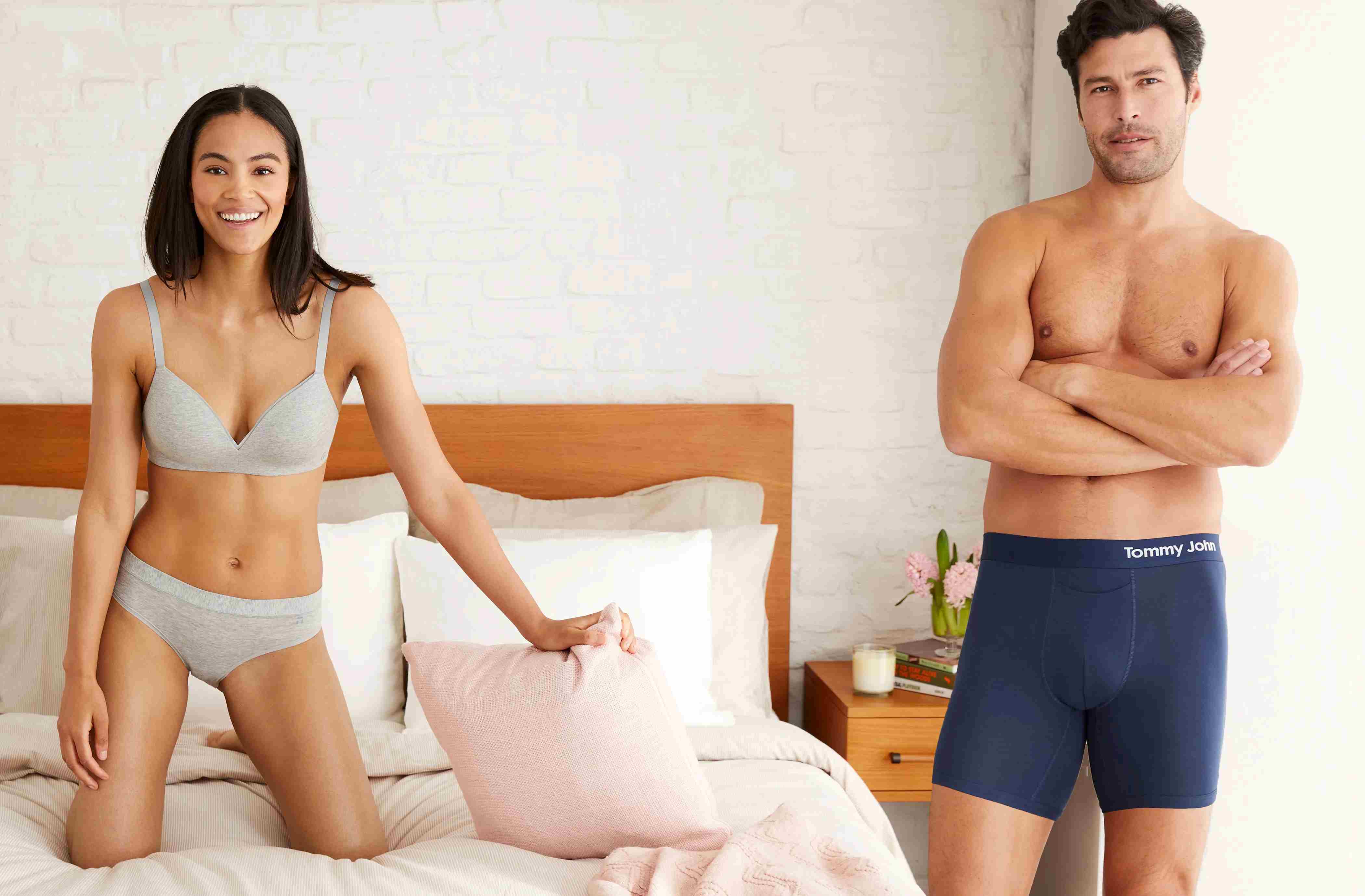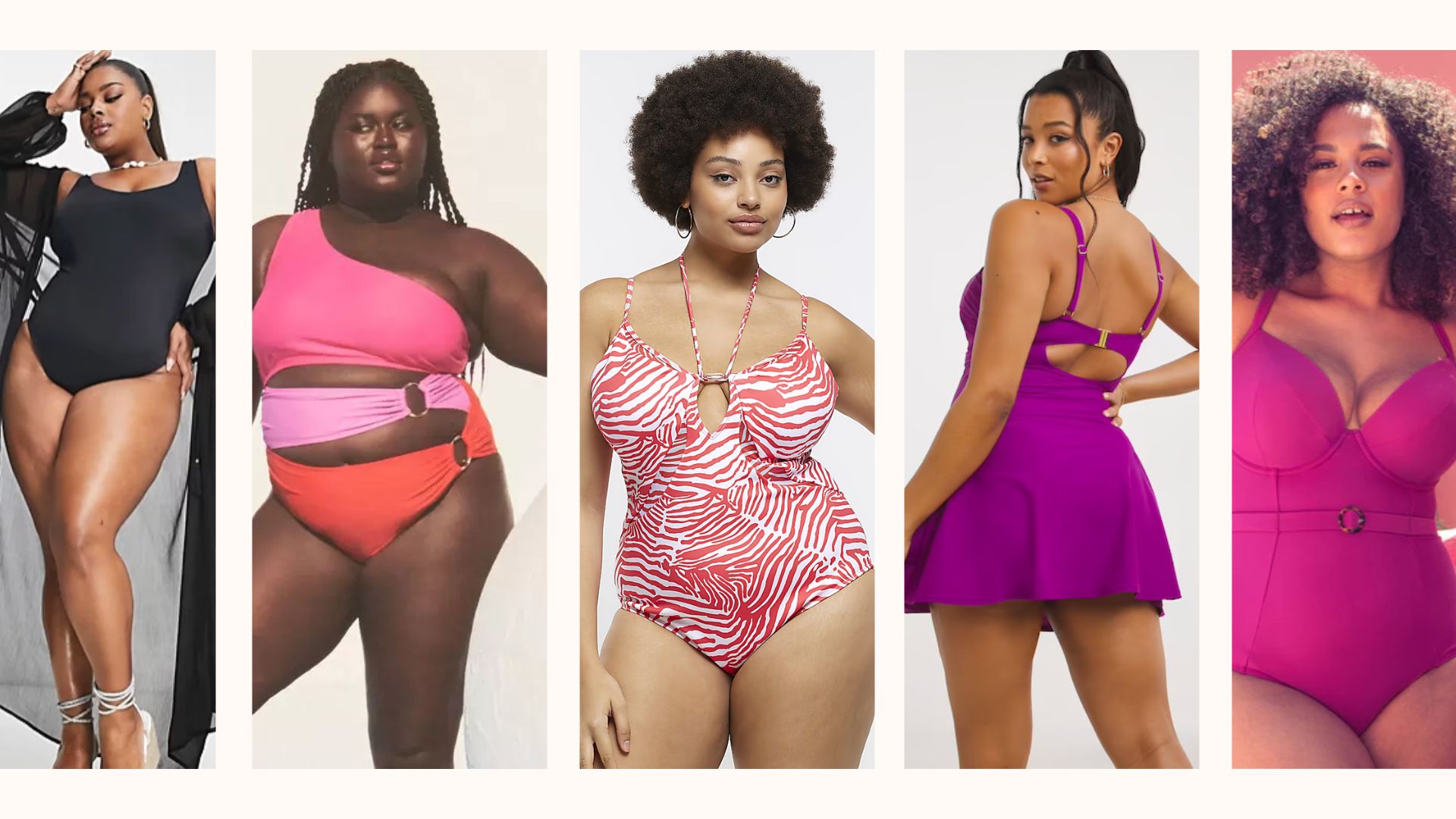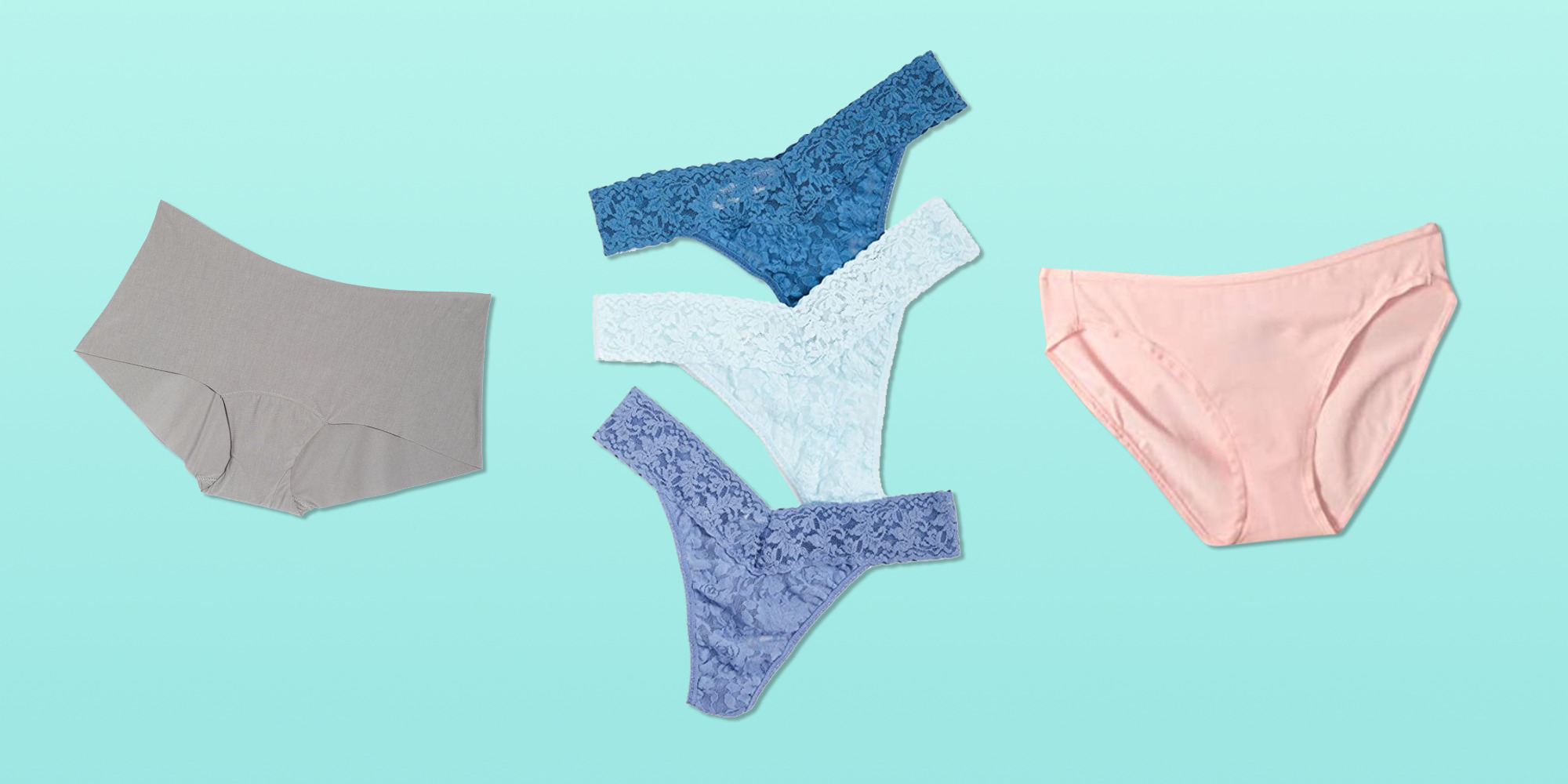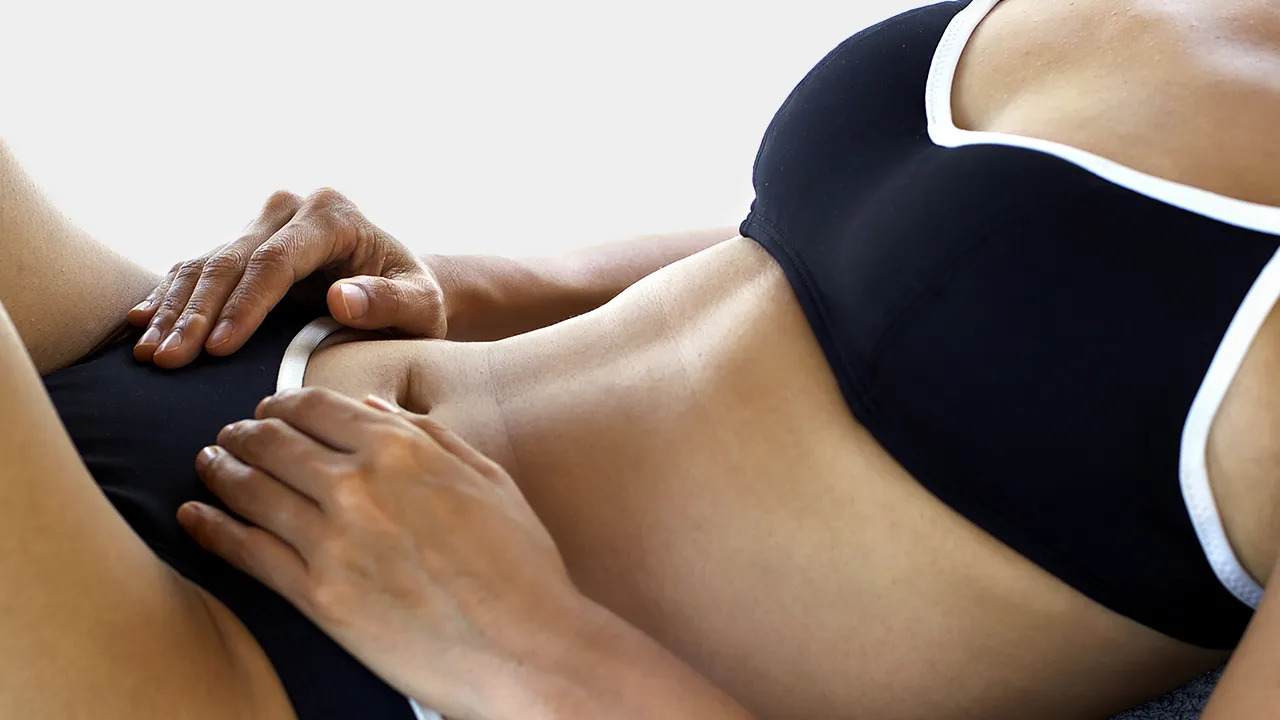Home>Buying Guides>What Swimsuit Size Do I Wear
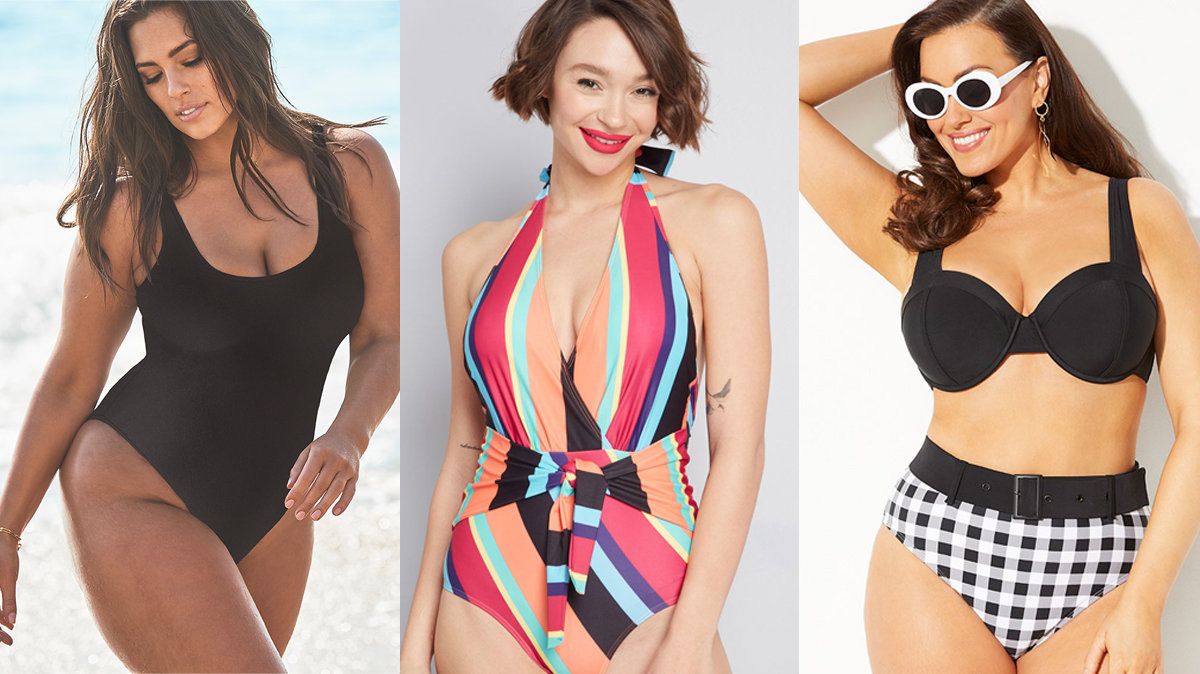

Buying Guides
What Swimsuit Size Do I Wear
Modified: August 5, 2023
Unsure about your swimsuit size? Find out your perfect fit with our helpful guide for women. Say goodbye to ill-fitting swimsuits!
(Many of the links in this article redirect to a specific reviewed product. Your purchase of these products through affiliate links helps to generate commission for Under-tec.com, at no extra cost. Learn more)
Table of Contents
Introduction
Welcome to the wonderful world of swimsuit shopping! Whether you’re preparing for a tropical beach getaway, a poolside party, or simply looking to update your summer wardrobe, finding the perfect swimsuit that fits you like a glove is essential. But with so many different styles, sizes, and brands to choose from, the task can seem overwhelming.
Have you ever found yourself asking, “What size swimsuit do I wear?” If so, you’re not alone. Determining the right size can be a challenge, as swimwear sizing can vary widely among different brands and styles. and It’s crucial to start by understanding how swimsuit sizing works to ensure a comfortable and flattering fit.
In this article, we’ll guide you through the process of finding the right swimsuit size. We’ll cover everything from taking accurate measurements to comparing them with size charts, and even provide tips on trying on swimsuits to ensure a perfect fit. So, let’s dive in and decode the mysteries of swimsuit sizing!
Understanding Swimsuit Sizing
When it comes to swimsuit sizing, it’s important to remember that it can vary greatly from brand to brand. Unlike clothing sizes that typically follow a standard measurement chart, swimsuit sizes are often unique to each manufacturer. This means that your size in one brand may not necessarily match your size in another.
Swimsuit sizes are generally labeled with a combination of numbers, letters, or both. The numbers usually indicate the measurement around your bust, waist, and hips, while the letters denote the cup size for bikini tops. It’s crucial to pay attention to both the numbers and letters to ensure the best fit.
Another factor to consider is that swimsuits are designed to fit differently depending on the style. For example, a one-piece swimsuit may have a different fit than a bikini, and a high-waisted bottom may fit differently than a low-rise one. Understanding the style and cut of the swimsuit will help you determine the right size for each specific style you’re interested in.
Moreover, the fabric and stretchability of swimsuits also play a role in sizing. Some swimsuits are made with stretchy materials that can accommodate a range of sizes, while others offer less flexibility. It’s important to consider the fabric and elasticity of the swimsuit when determining your size.
Lastly, remember that swimsuit sizes are not meant to dictate your body shape or beauty. They are merely a reference point to help you find a suit that will provide the right support, coverage, and comfort. Don’t be discouraged if you need a different size than you expected, as the most important thing is to feel confident in what you’re wearing.
Taking Accurate Measurements
When it comes to finding the perfect swimsuit size, taking accurate measurements is key. By measuring your body correctly, you’ll have a better understanding of which size to choose and ensure a more precise fit. Here are the essential measurements you should take:
- Bust: Wrap the measuring tape around the fullest part of your bust, ensuring that it’s straight across your back and not too tight or loose. This measurement will help determine your cup size for bikini tops.
- Underbust: Measure the circumference directly underneath your breasts. This measurement is especially important for finding the right band size for bikini tops.
- Waist: Measure the narrowest part of your waist, usually around the belly button area. This measurement will help determine the correct size for bottoms and one-piece swimsuits.
- Hips: Measure the fullest part of your hips, typically around the widest point of your buttocks. This measurement is crucial for finding the right size for bottoms and determining the overall fit of the swimsuit.
- Torso Length: If you’re considering a one-piece swimsuit, it’s helpful to measure your torso length. Start at the top of your shoulder and measure down the front of your body, passing through the crotch area, and up the back to the starting point. This measurement is important for ensuring the right fit and avoiding any discomfort.
When taking measurements, it’s essential to use a flexible measuring tape for accuracy. Stand straight and relaxed while taking the measurements, and avoid pulling the tape too tight. Additionally, it’s best to measure yourself in your underwear or a form-fitting outfit to get the most precise measurements.
Once you have your measurements, refer to the brand’s size chart to find your appropriate size. Keep in mind that each brand may have slightly different measurements, so be sure to consult the size chart specific to the brand you’re interested in. If your measurements fall between two sizes, it’s often recommended to go with the larger size for a more comfortable fit.
By taking accurate measurements and consulting the size charts, you’ll have a solid foundation for finding the perfect swimsuit size that flatters your body and ensures your utmost confidence.
Comparing Measurements with Size Charts
Once you have taken accurate measurements of your bust, underbust, waist, hips, and torso length, the next step is to compare these measurements with the brand’s size chart. Size charts are essential tools provided by manufacturers to help customers determine their ideal swimsuit size.
When comparing your measurements with the size chart, it’s essential to pay attention to the specific guidelines provided by the brand. Some size charts may provide a simple numerical measurement guide, while others may include additional information such as cup size or suggested clothing sizes. Take note of any special instructions or additional measurements required for a particular style.
It’s important to be mindful that swimsuit sizes can vary across different brands. A size 8 in one brand may not have the same measurements as a size 8 in another brand. This is why it’s crucial to consult the size chart provided by the specific brand you’re interested in purchasing from. Avoid assuming that your usual clothing size will automatically translate to swimsuit sizing.
When comparing your measurements with the size chart, focus on the measurements that closely match your body. Depending on your body shape, you may find that your bust measurement matches one size, while your waist or hip measurement corresponds to a different size. Prioritize the measurements that align with the most challenging areas to fit to ensure a comfortable and flattering swimsuit.
If your measurements fall between two sizes on the size chart, consider the style and fit you prefer. If you prefer a snugger fit, you may opt for the smaller size. However, if you prefer a more relaxed and comfortable fit, it’s generally recommended to choose the larger size.
Keep in mind that the size chart serves as a general guide, and your personal preferences and body shape also play a role in finding the right size. Don’t hesitate to reach out to the brand’s customer service if you have any questions or need further assistance in determining the best size for you.
By comparing your measurements with the brand’s size chart, you’ll have a better understanding of which size to select, increasing the likelihood of finding a perfectly fitting swimsuit that makes you feel confident and comfortable.
The Importance of Trying On Swimsuits
While taking measurements and consulting size charts are helpful steps in finding your ideal swimsuit size, there’s no substitute for actually trying on the swimsuit. Trying on swimsuits is essential for several reasons, as it allows you to assess the fit, comfort, and overall appearance of the swimsuit on your body.
One of the main reasons why trying on swimsuits is crucial is that it gives you a better sense of how the garment will fit and flatter your unique body shape. Swimsuits can look different on a hanger compared to when they’re worn. Trying on the swimsuit allows you to see how it hugs your curves, supports your bust, and accentuates your assets.
Furthermore, trying on swimsuits gives you a chance to ensure that the size you chose based on measurements and the size chart is indeed the right fit for you. Sometimes, despite following the guidelines, a swimsuit may still not fit as expected. Trying it on allows you to make any necessary adjustments and determine if you need to go up or down a size.
Another advantage of trying on swimsuits is that it allows you to assess the comfort level. Comfort is key when it comes to swimwear, as you’ll likely be engaging in various activities while wearing it, such as swimming or sunbathing. Trying on the swimsuit enables you to ensure that it feels comfortable against your skin, that the straps don’t dig in, and that there’s no unnecessary tightness or looseness.
In addition to fit and comfort, trying on swimsuits allows you to assess the overall appearance. You can see how the colors, patterns, and style of the swimsuit align with your personal taste and preferences. Trying on different styles and cuts can help you discover which ones accentuate your body in the most flattering way.
Finally, trying on swimsuits can boost your confidence. It allows you to see how you look and feel in different styles, helping you choose a swimsuit that makes you feel your best. Feeling confident in your swimwear is key to enjoying your time at the beach or pool, so taking the time to try on swimsuits is well worth the effort.
Remember, the fitting room is your friend when it comes to finding the perfect swimsuit. Don’t be afraid to try on multiple styles and sizes, take your time, and trust your instincts. Ultimately, finding a swimsuit that fits well, is comfortable, and makes you feel confident will ensure that you’re ready to make a splash in style!
Tips for Finding the Right Fit
When it comes to finding the right fit for your swimsuit, there are several tips and tricks that can help you navigate the process. By keeping these tips in mind, you’ll increase your chances of finding a swimsuit that fits well, flatters your figure, and makes you feel fabulous. Here are some important tips to consider:
- Know your body shape: Understanding your body shape will help you determine which swimsuit styles will be the most flattering for you. Whether you have an hourglass, pear, apple, or athletic shape, there are swimsuit designs that can accentuate your best features and minimize any areas of concern.
- Consider the support: If you have a larger bust, it’s important to look for swimsuits that offer adequate support in that area. Look for styles with underwire, built-in cups, or adjustable straps to ensure a comfortable and secure fit.
- Think about coverage: Determine your comfort level when it comes to coverage. Some may prefer more modest swimsuits with more coverage, while others may feel confident and comfortable in a more revealing style. Consider your personal preference and choose a swimsuit that makes you feel confident and at ease.
- Pay attention to fabric: Different swimsuit fabrics have different levels of stretch and support. If you’re looking for more control and support, opt for swimsuits made with firmer fabrics. On the other hand, if you prefer a lightweight and comfortable feel, look for swimsuits made with stretchy and quick-drying materials.
- Try different styles: Don’t be afraid to experiment with different swimsuit styles and cuts. What works for one person may not work for another. Trying on different styles can help you discover what flatters your body shape and makes you feel the most confident.
- Check the straps: Ensure that the straps of the swimsuit are adjustable and comfortable. Adjustable straps allow you to customize the fit to your liking and prevent any discomfort or digging into your skin.
- Move around: When trying on a swimsuit, it’s important to move around and simulate different activities you might engage in while wearing it. This will give you a better idea of how the swimsuit holds up and if it stays in place during movement.
- Trust your instincts: Ultimately, trust your instincts and choose a swimsuit that makes you feel beautiful and confident. If a swimsuit doesn’t feel right or flatter your figure, don’t settle. Keep looking until you find the one that feels just right.
Remember, finding the right fit is a personal journey, and it may take some time to find the perfect swimsuit. Don’t get discouraged if you don’t find it right away. Be patient, try on different styles, and trust that you’ll find a swimsuit that makes you feel amazing.
Considering Different Swimsuit Styles
When it comes to swimsuits, there is a wide variety of styles to choose from. Each style offers its own unique features and benefits. By understanding the different swimsuit styles available, you can select the one that best suits your body shape, preferences, and the occasion. Here are a few popular swimsuit styles to consider:
- Bikini: Bikinis are a classic swimwear choice that consists of a two-piece set, typically featuring a bikini top and bottom. They come in various styles such as triangle tops, bandeau tops, halter tops, and more. Bikinis are a versatile choice, allowing you to mix and match different tops and bottoms to create your own unique combination.
- One-Piece: A one-piece swimsuit is a single garment that covers the torso and is a great option for those seeking more coverage. One-piece swimsuits come in a variety of styles, including halter neck, tankini, bandeau, and maillot. They can offer shaping, tummy control, and provide a sleek, sophisticated look.
- Tankini: Tankinis combine the coverage of a one-piece swimsuit with the convenience of a two-piece. They typically consist of a tank top-style upper piece and a separate bottom. Tankinis provide more coverage for the midsection and are a great choice for those who want versatility and comfort.
- High-Waisted: High-waisted swimsuits have made a comeback in recent years and are beloved for their retro-inspired aesthetic and flattering fit. These swimsuits feature a higher waistline, often reaching the belly button or higher, providing coverage for the stomach while accentuating the waistline.
- Swimdress: Swimdresses are a feminine and elegant swimsuit option that offers a bit more coverage. They resemble a short dress with an attached or separate bottom. Swimdresses are popular for their flowy and flattering design, making them an excellent choice for those who prefer a more modest look.
- Monokini: Monokinis are a unique style that combines the coverage of a one-piece swimsuit with the cutouts and design elements of a bikini. They often feature strategic cutouts or mesh panels, adding a touch of allure to your beach or poolside look.
- Sports/Fitness: If you’re looking for a swimsuit to support an active lifestyle or engage in water sports, consider a sports or fitness swimsuit. These swimsuits are specifically designed with features such as racerback straps, built-in bras, and more durable fabrics to provide support, comfort, and freedom of movement.
When choosing a swimsuit style, consider your body shape, the level of coverage you desire, and the activities you plan to engage in while wearing it. Don’t be afraid to try on different styles to see what works best for you and makes you feel confident and comfortable.
Remember, the swimsuit style you choose should reflect your personal taste and make you feel amazing. With so many options available, you’re sure to find a swimsuit style that flatters your figure and enhances your beach or poolside experience.
Common Mistakes to Avoid
When shopping for swimsuits, it’s important to be aware of some common mistakes that people often make. Avoiding these mistakes can help ensure that you find a swimsuit that fits well, flatters your figure, and boosts your confidence. Here are some common mistakes to avoid:
- Ignoring your body shape: Every body is unique, and understanding your body shape is essential in finding a swimsuit that flatters your figure. Avoid choosing a swimsuit solely based on trends or what looks good on others. Instead, focus on styles that enhance your body’s natural attributes.
- Overlooking the importance of proper support: If you have a larger bust, it’s crucial to choose a swimsuit that provides adequate support. Avoid flimsy or unsupportive styles that can leave you feeling uncomfortable and unsupported. Look for swimsuits with adjustable straps, underwire, or built-in cups to ensure proper support and enhance your figure.
- Not trying on different sizes: Swimsuit sizing can vary between brands, so don’t be afraid to try on different sizes. Avoid assuming that your usual clothing size will automatically correspond to your swimsuit size as different brands have different measurements. Experimenting with different sizes will help you find the best fit for your body shape.
- Disregarding the importance of proper fit: A properly fitting swimsuit is crucial for your comfort and confidence. Avoid swimsuits that are too tight, causing discomfort or digging into your skin, as well as those that are too loose and offer no support. Make sure to try on swimsuits and assess the fit from all angles before making a purchase.
- Neglecting to check the return/exchange policy: Before making a final decision, be sure to check the return or exchange policy of the store or online retailer. This will give you peace of mind knowing that you have the option to return or exchange the swimsuit if it doesn’t meet your expectations or fit properly.
- Being influenced by unrealistic body standards: It’s important to remember that swimsuit models and influencers represent a narrow definition of beauty. Avoid comparing yourself to unrealistic body standards and focus on finding a swimsuit that makes you feel confident and comfortable in your own skin.
- Forgetting about sun protection: While style and fit are essential, don’t forget about sun protection when choosing a swimsuit. Opt for swimsuits with built-in UPF protection or consider pairing your swimsuit with a rash guard or cover-up to shield your skin from harmful UV rays.
By being mindful of these common mistakes, you can navigate the swimsuit shopping process more effectively and find a swimsuit that makes you look and feel amazing.
Conclusion
Finding the perfect swimsuit can sometimes feel like a daunting task, but with the right knowledge and approach, it can be an enjoyable and rewarding experience. By understanding swimsuit sizing, taking accurate measurements, consulting size charts, and trying on different styles, you can increase your chances of finding a swimsuit that fits well, flatters your figure, and boosts your confidence.
Remember that swimsuit sizes can vary between brands, so don’t be discouraged if you need a different size than you expected. What matters most is finding a swimsuit that makes you feel comfortable and beautiful, regardless of the number or letter on the tag.
Consider your body shape, preferences, and the occasion when choosing a specific swimsuit style. Whether you opt for a bikini, one-piece, tankini, high-waisted, or any other style, make sure it aligns with your personal taste and makes you feel confident.
Avoid common mistakes such as ignoring your body shape, overlooking the importance of proper support and fit, and neglecting to check the return/exchange policy. By avoiding these pitfalls and focusing on what works best for you, you’ll be well on your way to finding the perfect swimsuit.
Lastly, keep in mind that finding the right swimsuit is a personal journey. Have patience, be open to trying on different styles, and trust your instincts. Embrace your uniqueness and let your swimsuit be a reflection of your individuality and personal style.
With these tips and insights in mind, you’re now equipped to embark on your swimsuit shopping adventure with confidence and excitement. So go ahead, dive in, and enjoy the process of finding a swimsuit that will make you feel fabulous all summer long!
